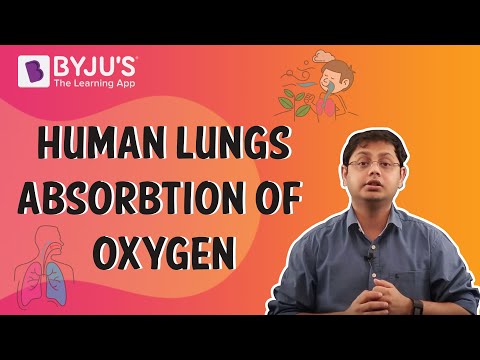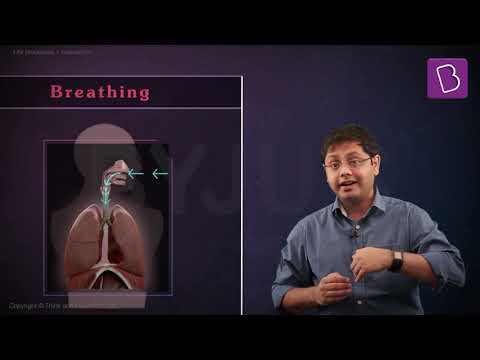According to the CBSE Syllabus 2023-24, this chapter has been renumbered as Chapter 14.
Respiration is a metabolic process which is carried out by all living organisms, including plants, animals, and humans, for the production of energy and to stay alive. Except for obligate anaerobes, every other organism, from amoeba to humans, needs oxygen to survive. And evolution has charted a number of systems which enable the exchange of gases in organisms.
There are two types of respiration:
- Aerobic respiration — occurs in the presence of oxygen to produce energy.
- Anaerobic respiration — occurs in the absence of oxygen to produce energy.
Breathing can be simply defined as the process of inhaling oxygen gas from the atmosphere and exhaling the carbon dioxide gas back into the atmosphere is termed breathing, and the process is known as respiration.
Also Read, Difference Between Aerobic Respiration and Anaerobic Respiration.
Here in these notes, students can find complete information about the Respiratory Organs and Human Respiratory System.
Respiratory Organs
For instance, insects breathe through a network of tubes called tracheae, fishes breathe through their gills, and earthworms breathe through their moist skin by employing diffusion. Humans and nearly all other vertebrates breathe through their lungs or gills.
Interestingly, there are even more unconventional methods by which certain organisms breathe. Take the Labyrinth fish, for example. Apart from the gills, this fish has an organ called the labyrinth. This enables it to breathe the air from above the surface of the water.
Also Refer, Cellular Respiration
For more information on Human Lungs and Human Respiration, watch the below videos


Human Respiratory System

The human respiratory system is a set of organs and structures that help facilitate the exchange of gases in humans. It comprises of the following:
- Nose and Mouth
- Pharynx
- Larynx
- Trachea
- Bronchi and the Bronchioles
- Lungs
The actual exchange of gases takes place in tiny, innumerable structures called the alveoli and the capillaries in the lungs. Here, deoxygenated blood gets re-oxygenated and sent to the heart, where it is pumped to all the other parts of the body. Typically, most illnesses and diseases of the respiratory system occur when the alveoli or bronchial tubes are damaged or inflamed. For instance, asthma is a disease where the airways get inflamed, and it induces breathing difficulties.
| Also Access |
| NCERT Solutions for Class 11 Biology Chapter 17 |
| NCERT Exemplar for Class 11 Biology Chapter 17 |
For more information on Respiration, watch the below video

Important Questions on Breathing and Exchange of Gases
- Define tidal volume.
- How do insects breathe?
- Why do we need energy?
- Describe the process of inspiration.
- Define Aerobic and Aerobic respiration.
- State the major transport mechanisms for CO2.
- Where does cellular respiration occur in plant cells?
- State the major components of the human respiratory system.
- Give the balanced chemical equation for Cellular Respiration.
- Explain the role of respiration and photosynthesis in the process of gaseous exchange.
Frequently Asked Questions on CBSE Class 11 Biology Notes Chapter 17 Breathing and Exchange of Gases
What is the difference between aerobic and anaerobic respiration?
Aerobic respiration: Glucose breaks down or completely oxidation into carbon dioxide and water. Anaerobic respiration: Glucose breaks down into ethyl alcohol, carbon dioxide, and energy.
What is the main function of bronchi?
Bronchi carry air to the lungs, and they also help moisturise the air which is inhaled.
What is meant by cellular respiration?
The process by which organisms combine oxygen with molecules, diverting the chemical energy in these substances into life-sustaining activities and discarding, as waste products, carbon dioxide and water.
Comments